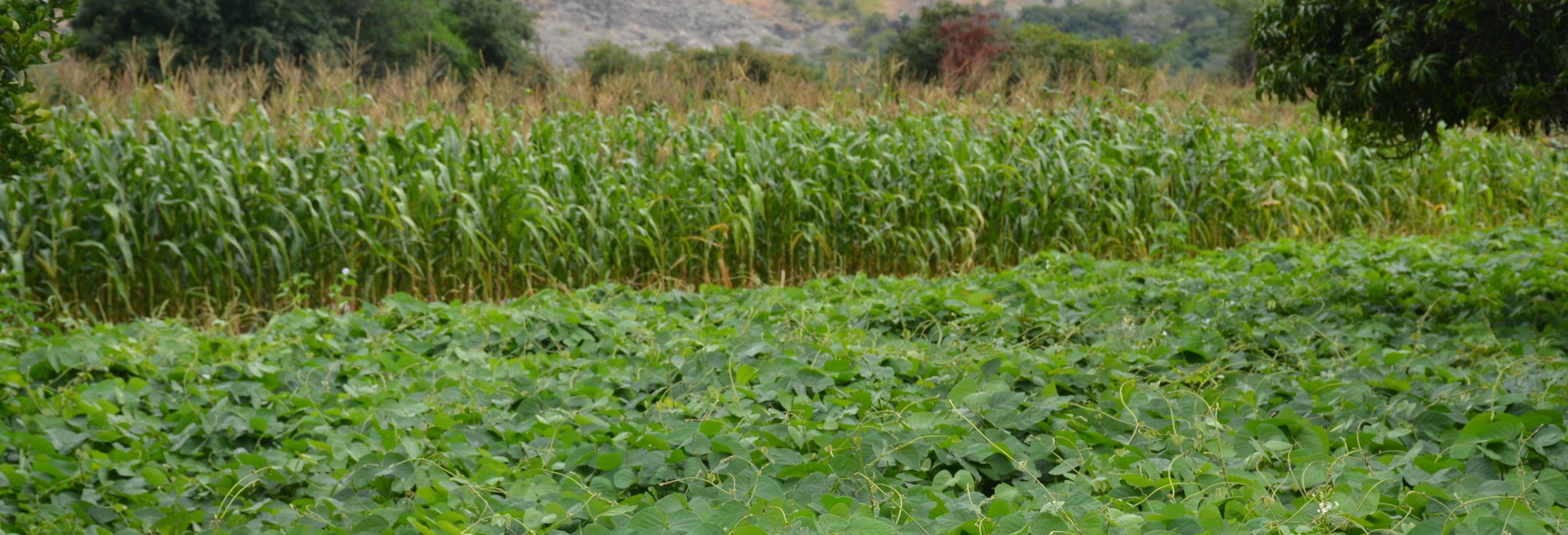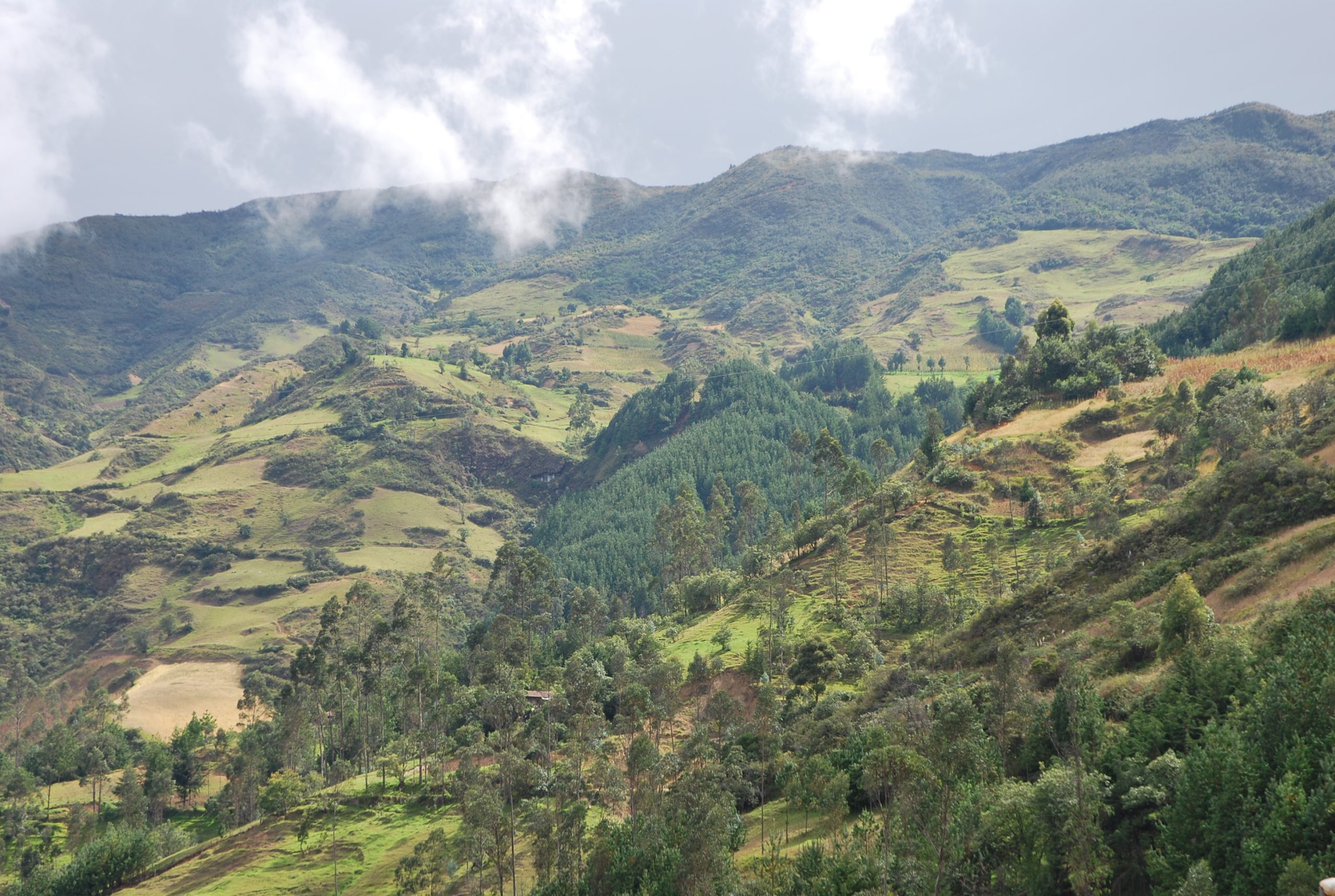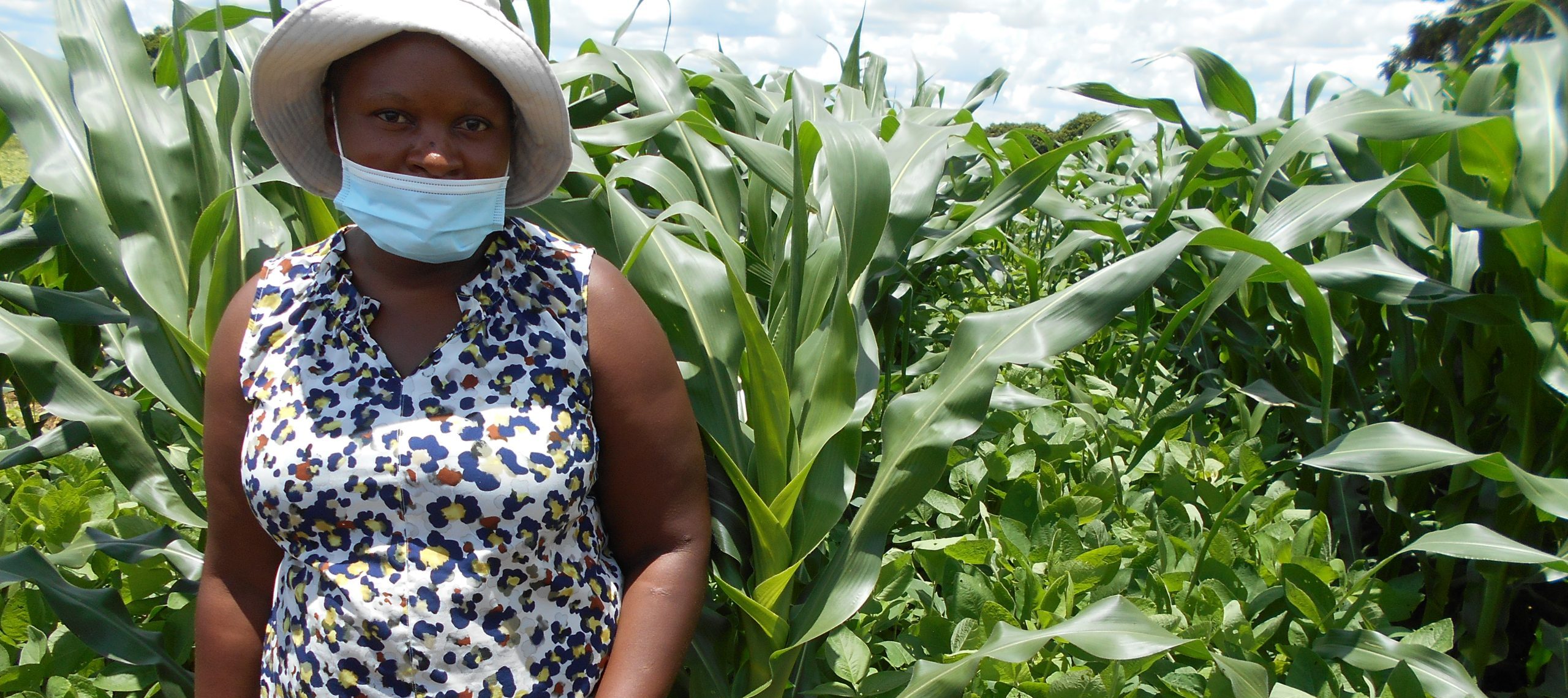While maize is the primary staple food crop in Zambia, its productivity on farmers’ fields reaches on average only about 20 percent of what it could achieve with good agronomic practices. Some reasons for this inefficiency are use of traditional varieties, low fertilizer use, and ineffective weed and pest control.
Closing the gap between potential and realized yields would have major benefits for farmers in Zambia, both in terms of income and food security at the household and national levels. One possibility to increase maize productivity is by increasing crop diversity through the inclusion of legumes in maize-based farming systems. This could be done through intercropping, growing legumes in the rows between maize plants, or crop rotations and alternating maize and legumes in the same field from season to season.
CIMMYT scientists, along with collaborators from the Zambia Agriculture Research Institute (ZARI) and the University of Zambia’s School of Agricultural Science, set out to determine which cropping systems might lead to increased productivity for maize farmers in Zambia and their results were published in the journal Field Crops Research.
“There is great potential in Zambia to increase yields to help ensure food security,” said Mulundu Mwila, PhD candidate and scientist at ZARI. “We wanted to determine the cropping systems that offered the most benefits.”
Setting up the study
For this research, ZARI and CIMMYT scientists established maize-based cropping systems trials, comprising maize monocropping, and maize-legume rotations and intercrops under both ‘conventional’ tillage, and Conservation Agriculture, across 40 farms in a variety of agroecological zones in Zambia. The team also conducted household surveys in the same communities hosting the on-farm trials to determine the share of households with enough cultivated land to benefit from the tested cropping systems.
Researchers found that the tested cropping systems produced more maize per hectare compared to non-trial host farms in the same region. The greatest positive effect uncovered was that maize-legume rotations in Zambia’s Eastern Province had the potential to increase maize yield by 1 to 2 tons per hectare, per growing season. “The Eastern Province trials showed better results because of stable and adequate rainfall amounts and distribution and because of using groundnut as a rotation crop,” said Mwila.
Researchers attributed the small effect of legumes on maize yield in the Southern Province to low levels of biomass production and nitrogen fixation, due to low and erratic rainfall, and to low residue incorporation because of livestock grazing. Conversely, the small effect of legumes on maize yield in the Northern Province might be attributed to the high rainfall amount in the region, leading to high rates of leaching of residual nitrogen during the growing season as well as the use of common beans as the preceding crop.
Finding the right amount of land
With evidence showing the potential benefits of maize-legume rotations, the availability of land is a constraint for small farms across sub-Saharan Africa, thus it is important to quantify the land area needed for farmers to implement maize-legume rotations.
“Our findings match prior research showing the benefits of maize-legume rotations in Eastern Zambia” said Silva. “However, implementing maize-legume rotations remains a challenge for many smallholders due to small farm sizes.”
Nearly 35, 50, and 70% of the surveyed farms in the Northern, Eastern, and Southern Provinces, respectively, had enough land to achieve the same level of maize production obtained on their farm with the yields of the maize-legume rotations tested in the on-farm trials. “With our findings showing increased maize yields, and our efforts to determine the amount of land needed for food and nutrition security at household level, the next steps can be to facilitate methods to disseminate this information to policy makers and to farmers that have enough land area to benefit from diversified cropping systems,” said Silva.
For farmers with not enough land to reap the benefits of maize-legume rotations, intercropping legumes within the maize has shown promising results. The researchers also call for further research to specify the contributing factors to small farms not seeing benefits from maize-legume rotations.


 Climate adaptation and mitigation
Climate adaptation and mitigation 